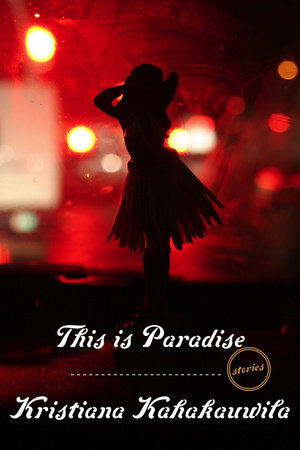This Is Paradise Reader’s Guide
By Kristiana Kahakauwila


1. “This Is Paradise”:
In the story “This Is Paradise,” Kristiana Kahakauwila employs the first-person plural point of view (the “we”) and then shifts that “we” among three groups of women: young surfers, career women, and Polynesian hotel workers. Why might the author choose to tell this story from a plural point of view? Why might she offer the perspective of more than one group?
2. Two main themes in this story are blame and the acceptance of responsibility. Who do you blame most for the tragedy that occurs? Do you feel each woman, or group of women, accepts enough blame? Do any need to accept a greater weight of responsibility?
3. “Wanle”:
Wanle’s relationship with her birds might be seen as one of a mother with children. She not only feeds and cares for them, she hums to them, speaks to them, and loves them. Yet, she also presses them into violence. How does the story build sympathy for a character who engages in this kind of violence?
4. When Wanle learns the truth about her father, she still goes through with the fight with Mr. Oh. Why do you think she does this? Have you ever felt compelled to follow through with something even when the conditions of the situation changed?
5. Discuss how Wanle’s relationship with language evolves over the course of the story. Why does Wanle think so much about language?
6. “The Road to Hana”:
In “The Road to Hana,” Cameron has grown up on the islands but isn’t kanaka maoli (Native Hawaiian). Becky is kanaka maoli, but has grown up in the continental United States. What difficulties have each of these characters faced by growing up in a culture that doesn’t always accept them? How has their upbringing influenced their perspective of the islands?
7. Why does the tension between Cameron and Becky become focused on the dog? Could another incident—a flat tire, a car accident, a cat, etc.—have had the same effect?
8. “Thirty-Nine Rules for Making a Hawaiian Funeral into a Drinking Game”:
This story is written in the second-person point of view (the “you”). Why might the author use “you” instead of “I” or “she”?
9. In Rule 38, the narrator says, “You have one more name, another branch of family to whom you belong. One more from which you can’t escape.” How does the story examine the tension between familial belonging and pressure, acceptance and expectation?
10. “Portrait of a Good Father”:
In “Portrait of a Good Father,” the story opens and closes with a description of a photograph. Discuss how the physical representation of Keaka changes over the course of the story. How do his physical characteristics help you better understand his interior motivations and emotions?
11. The story is narrated, in turn, by Sarah, Grace, and Joon. However, the final section allows the reader direct insight into Keaka. What is the effect of seeing multiple female perspectives of Keaka? Why might the author introduce Keaka’s point of view in the final section?
12. “The Old Paniolo Way”:
One of the central questions of “The Old Paniolo Way” asks if a long-held secret should be revealed to a dying loved one. Maile, Albert, and Pili each have different answers for this question and act accordingly. With which character do you most agree? Discuss your reaction to Pili’s ultimate decision to tell the truth.
13. In the penultimate scene, Joe’s daughter sings “Ku’u Home O Kahalu’u,” a popular contemporary Hawaiian song written by Jerry Santos and first performed by the group Olomana. The lyrics include the lines:
Last night I dreamt I was returning
and my heart called out to you
to please accept me as you’ll find me
Me kealoha ku’u home o Kahalu’u.
For many native Hawaiians living off-island, the song captures the tension of returning home. How do the lyrics of this song underline the themes of this story? How does the sentiment expressed in this song echo across the collection, and its characters, as a whole?
14. All stories:
Kristiana Kahakauwila said of writing this collection: “For the first time I had to let my stories access all my anger, my sadness, my confusion, my hopefulness. My characters, if they’re raw, are so because I was raw. I had never written at such a brink before. I had to come to terms with what it meant to be hapa, half-Hawaiian and half-haole.” Where do you see the characters coming to terms with their heritage? What do you think the author is ultimately saying about being “hapa,” or of a mixed ancestry? Where do you see a rawness of emotion in these characters and/or stories?
15. Discuss how language—pidgin, Hawaiian, English, and the blending of these vernaculars—is used in the stories. Why do some characters use only one kind of language while others “code-switch” in order to fit in with different groups of people?
16. Discuss how This Is Paradise has affected your view of Hawai’i. What do you find surprising in Kahakauwila’s depiction of the islands? What do you find familiar?
Just for joining you’ll get personalized recommendations on your dashboard daily and features only for members.
Find Out More Join Now Sign In